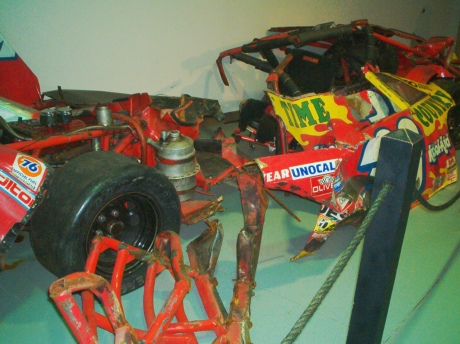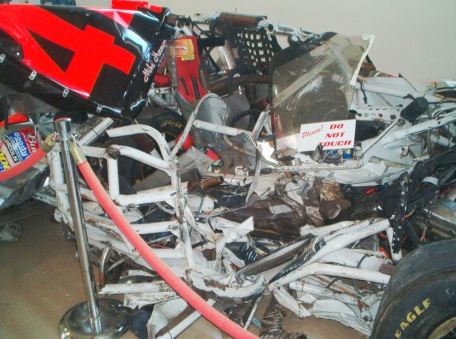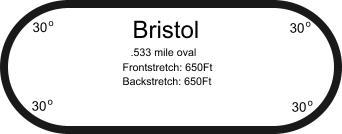

Bristol Motor Speedway:World's Fastest Half Mile
Bristol Motor Speedway Races:
The Bristol Motor Speedway offers an exciting short track experience in the Appalachian Mountains of Bristol Tennessee. Fans come to the track to watch the action on the high speed, high banked half mile racetrack where wrecks are frequent, tempers flare and payback is expected. Since Johnny Allen, driving in relief of Jack Smith, won the first race, the Volunteer 500, July 30, 1961, racing fans dream of tickets to the NASCAR races held here. From crude plans drawn on whatever paper that was available, a racetrack of exactly ˝ mile was built. After opposition to the track’s intended location at Piney Flats, the speedway’s founders, Carl Moore, R.G. Pope, and Larry Carrier settled on a location five miles down Highway 11E in Bristol on land formerly used for a dairy farm. Its funny how things work out for the best because the 'Piney Flats Motor Speedway' just doesn't sound right. Construction began on the then "Bristol International Speedway" in 1960. The total cost of the project was $600,000 including the cost of land and construction. The original layout of the track had 60 foot wide straightaways and 75 foot wide turns banked at 22 degrees. The track layout changed in 1969 in part because the races took so long since the cars could not stay on the track in the corners. The new configuration increased the length of the speedway to .533 miles and the banking in the corners to 36 degrees. In 1978 the Bristol International Speedway hosted a night race. This race was to become one of NASCAR's favorite events and one of the toughest tickets to get in all of racing if not in all of sports. In 1992 the speedway's asphalt was removed and replaced with concrete. This made Bristol the first track to host a NASCAR race on concrete. After several changes in ownership and one bankruptcy Speedway Motorsports, Inc. purchased the then 71,000 seat track on January 22, 1996 for $26 million, quite a difference from the approximately $600,000 original investment. In May of the same year the name was changed to Bristol Motor Speedway and by August, the seating capacity was increased to 86,000 seats. In 2007 the layout of the track changed again. This time the new configuration consisted of variable banking in the corners 24 degrees on the bottom up to 30 degrees of banking on the top with 6 to 10 degrees of banking in the straightaways. This new configuration allowed for some very exciting two and even three wide racing that was completely unheard of with the old track layout. SMI continues to invest in improvements in the speedway, making Bristol Motor Speedway the largest sports venue in Tennessee, and one of the largest in the country.
It is an oval shaped racetrack with a length of .533 miles, 24 to 30 degrees of banking in the turns and 6 to 10 degrees on the straightaways. The front stretch measures 650 feet, as does the back stretch. The track is 40 feet wide but that doesn't seem to be wide enough for Michael Waltrip and Mike Harmon, both drivers had devastating crashes at the same spot on the track. Waltrip's crash came in 1990 when hit the turn 2 access gate completely destroying his race car yet he walked away unhurt.
 What's left of Michael Waltrip's car after the wreck
What's left of Michael Waltrip's car after the wreck
 What's left of Mike Harmon's car after the wreck
What's left of Mike Harmon's car after the wreck
Racing Details Since the track renovations in 2007 Bristol now has two sometimes even three racing grooves but the old style of beatin' and bangin' still happens. However now there are more ways to pass than just the old 'bump and run'. Not to say it doesn't happen anymore its just now a driver has the option of picking another grove to pass rather than just 'moving' the other car out of the way. Bristol hosts two races a year. The first race is a day race in the spring and the second race is a night race in the summer. The summer night race is one of the most sought after tickets in racing if not in all of sports.
Have You Been To Bristol Motor Speedway?
Do you have a great picture from a race at Bristol? A great story? An interesting fact? A tip? Anything! Return from Bristol Motor Speedway to Speedway Guide
|
































